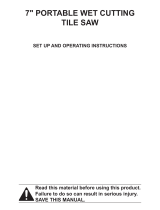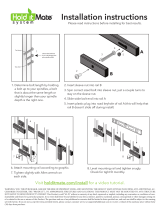Diamondback 64683 Owner's manual
- Category
- Power tools
- Type
- Owner's manual
This manual is also suitable for
Diamondback Item 64683 is a versatile power tool suitable for a wide range of cutting tasks. With its powerful motor and durable construction, it offers precise and efficient cutting through various materials. The adjustable cutting depth and angle settings allow for customized cuts, making it ideal for projects that require precision. The safety features, including the blade guard and non-slip handle, ensure a secure and controlled operation, minimizing the risk of accidents.
Diamondback Item 64683 is a versatile power tool suitable for a wide range of cutting tasks. With its powerful motor and durable construction, it offers precise and efficient cutting through various materials. The adjustable cutting depth and angle settings allow for customized cuts, making it ideal for projects that require precision. The safety features, including the blade guard and non-slip handle, ensure a secure and controlled operation, minimizing the risk of accidents.




















-
 1
1
-
 2
2
-
 3
3
-
 4
4
-
 5
5
-
 6
6
-
 7
7
-
 8
8
-
 9
9
-
 10
10
-
 11
11
-
 12
12
-
 13
13
-
 14
14
-
 15
15
-
 16
16
-
 17
17
-
 18
18
-
 19
19
-
 20
20
Diamondback 64683 Owner's manual
- Category
- Power tools
- Type
- Owner's manual
- This manual is also suitable for
Diamondback Item 64683 is a versatile power tool suitable for a wide range of cutting tasks. With its powerful motor and durable construction, it offers precise and efficient cutting through various materials. The adjustable cutting depth and angle settings allow for customized cuts, making it ideal for projects that require precision. The safety features, including the blade guard and non-slip handle, ensure a secure and controlled operation, minimizing the risk of accidents.
Ask a question and I''ll find the answer in the document
Finding information in a document is now easier with AI
Other documents
-
Amerimax Home Products 3012-12 Operating instructions
-
none JMK0001 Installation guide
-
Skil SAW 602683 5 Amp Wet User manual
-
 Pacific Handy Cutter PHC100 User manual
Pacific Handy Cutter PHC100 User manual
-
 Leegol Electric 1 User manual
Leegol Electric 1 User manual
-
Delta 96-110 Owner's manual
-
Delta 96-110FS User manual
-
RIDGID R4040S User guide
-
 Hold It Mate 00712 Installation guide
Hold It Mate 00712 Installation guide
-
Chicago Electric 68861 Owner's manual






















